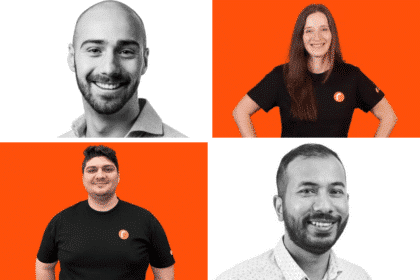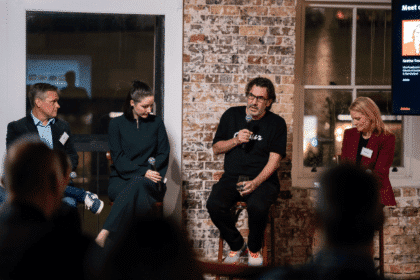Bobby Jania, CMO of Salesforce’s Marketing Cloud has said that AI has flipped the traditional marketing campaign on its head, with customers — instead of brands — being in the driving seat.
Speaking to a panel of journalists at Salesforce’s Connections event in Chicago, Jania told B&T that the attention economy and AI will force companies to entirely rethink their marketing strategies.
“Relevancy is typically connected to engagement and if you’re not being more relevant and you’re being broad [in your approach to marketing communications] you will be the first to, in essence, get unsubscribed from,” said Jania.
“The economy definitely has an element of the attention economy and, with more companies out there trying to get our attention, but what will continue to remain true is that whatever is most relevant to what I need at that moment in time will be the one that cuts through.”

The previous day, Salesforce announced a raft of changes and updates to its Marketing Cloud software, including giving marketers the ability to automatically generate campaign briefs and campaign content using AI. In fact, these AI-generated campaigns can be pre-filled with a remarkable amount of customer data and timed to be sent according to user interactions with any digital touchpoint.
During a keynote speech launching the new tools, Salesforce execs gave the example of British automaker Aston Martin sending individualised emails to customers offering them updates on cars on order, with the potential to upsell them to different features.
These new features, Salesforce believes, have come in response to changing consumer expectations and methods of brand interaction.
“The historical campaign hierarchy was company-driven. The company decided the campaign message, the channel, the calendar. That meant that I might get a campaign for new jeans a month after I bought a pair of jeans,” said Jania.
“What we’re seeing is that flipping to be customer-driven which is where [the company] recognises that I had just purchased a pair of jeans and figures out what the next engagement might be. And it might not be a purchase, it might be a blog on how to match your jeans with this summer’s trends and to keep that engagement going. But it’s really the customer driving the next step and the brands that embrace that — having the customer in control — will, in my mind, succeed more than the ones that are just trying to push their message out regardless of timing and customer intent signals.”
Salesforce, however, is no stranger to a big brand campaign. In fact, it enlisted none other than Matthew McConaughey (at a reported cost of $10 million per year) to front its AI Wild West campaign. In fact, the campaign was even shortlisted for the inaugural Cairns Crocodiles B2B Campaign award.
Jania’s vision for the future of marketing is certainly a departure from traditional marketing is not unique, though it is radical. Michelle Klein, NRMA insurance’s chief customer and marketing officer, recently dispensed with the services of creative agency Bear Meets Eagle on Fire to partner up with Accenture Song — because of the latter’s customer experience chops.
“It’s a progressive, integrated approach. It’s end-to-end. What do we hear from customers? How does that inform our go-to-market? How does that affect business results? How does that affect customer satisfaction and how does that change how we show up as a brand?” she told B&T.
“It’s almost like a product lifecycle model that I’ve put in place from an operational and organisational perspective. We’ll be more agile as a marketing team and we’ll have the customer and marketing components deeply integrated to create amazing customer experiences.”
When pressed, Jania said that while AI-driven one-to-one marketing would leave traditional brands behind, it did not mean the end of more traditional one-to-many forms of marketing such as TVCs or billboards.
“You need to have the right balance of the two. On the flip side, I might be launching a new product and if no one knows that I have it, then I can’t even have demand for it,” he said.
Taking Apple as an example, Jania added, “I can’t get away from their billboards so there is an awareness that [the new iPhone] is out there.
“Then, I’m assuming that they would have the data on who was running an iPhone 12, 11 or 10 and realise that those are the people more attuned to upgrade. Or you could look at patterns and figure out that particular customers change their phones every three years and this is the third year.
“It’s how you recognise customer actions and intents and try to model when the right time to engage them with the right messages is and realising they’re more in control than the brand.”
Without AI, of course, finding the right time to speak to customers individually would require a huge amount of junior marketers spending a huge amount of time knee-deep in spreadsheets. Now, however, the computers do it for you.









